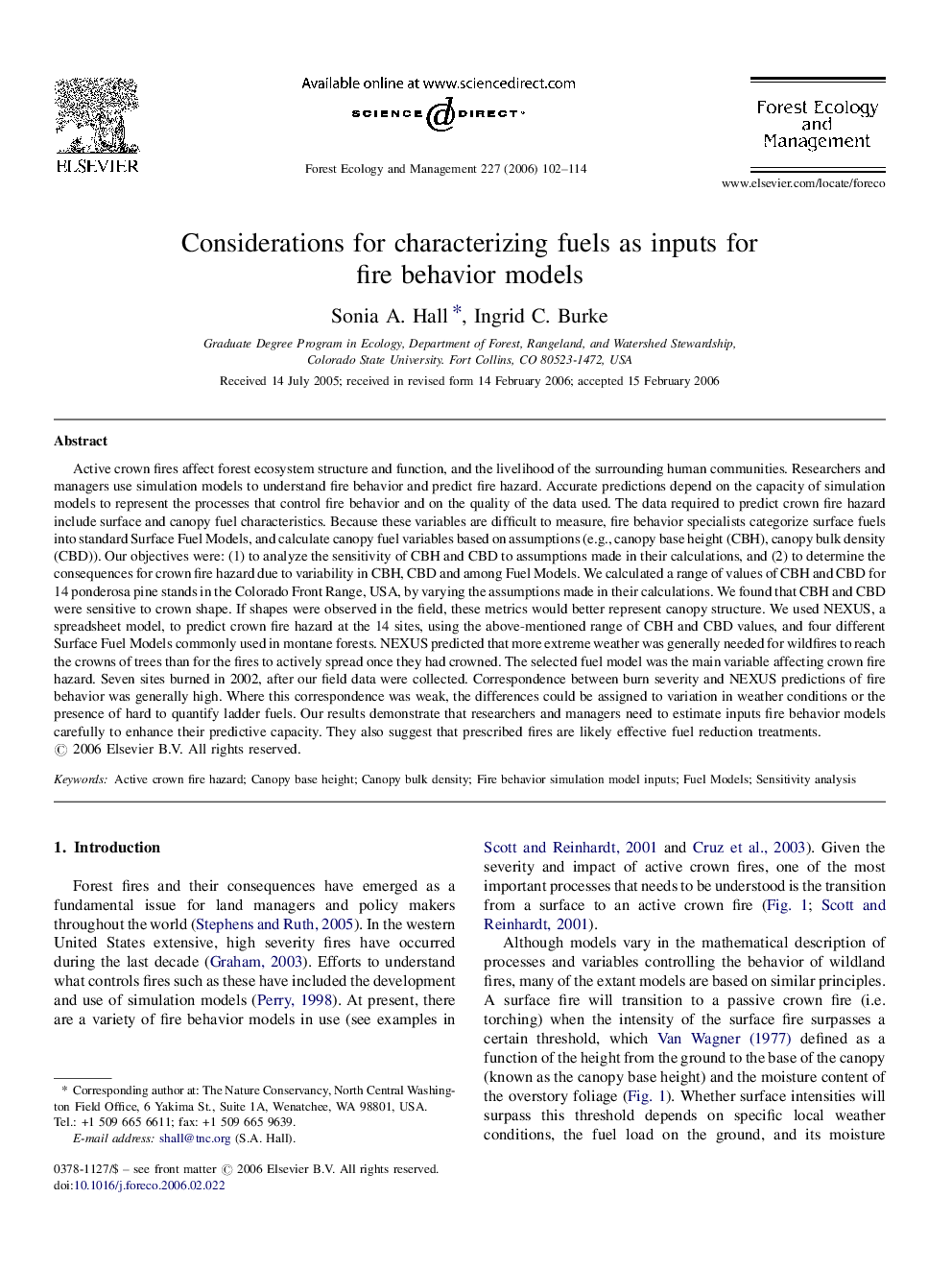| کد مقاله | کد نشریه | سال انتشار | مقاله انگلیسی | نسخه تمام متن |
|---|---|---|---|---|
| 90989 | 159418 | 2006 | 13 صفحه PDF | دانلود رایگان |

Active crown fires affect forest ecosystem structure and function, and the livelihood of the surrounding human communities. Researchers and managers use simulation models to understand fire behavior and predict fire hazard. Accurate predictions depend on the capacity of simulation models to represent the processes that control fire behavior and on the quality of the data used. The data required to predict crown fire hazard include surface and canopy fuel characteristics. Because these variables are difficult to measure, fire behavior specialists categorize surface fuels into standard Surface Fuel Models, and calculate canopy fuel variables based on assumptions (e.g., canopy base height (CBH), canopy bulk density (CBD)). Our objectives were: (1) to analyze the sensitivity of CBH and CBD to assumptions made in their calculations, and (2) to determine the consequences for crown fire hazard due to variability in CBH, CBD and among Fuel Models. We calculated a range of values of CBH and CBD for 14 ponderosa pine stands in the Colorado Front Range, USA, by varying the assumptions made in their calculations. We found that CBH and CBD were sensitive to crown shape. If shapes were observed in the field, these metrics would better represent canopy structure. We used NEXUS, a spreadsheet model, to predict crown fire hazard at the 14 sites, using the above-mentioned range of CBH and CBD values, and four different Surface Fuel Models commonly used in montane forests. NEXUS predicted that more extreme weather was generally needed for wildfires to reach the crowns of trees than for the fires to actively spread once they had crowned. The selected fuel model was the main variable affecting crown fire hazard. Seven sites burned in 2002, after our field data were collected. Correspondence between burn severity and NEXUS predictions of fire behavior was generally high. Where this correspondence was weak, the differences could be assigned to variation in weather conditions or the presence of hard to quantify ladder fuels. Our results demonstrate that researchers and managers need to estimate inputs fire behavior models carefully to enhance their predictive capacity. They also suggest that prescribed fires are likely effective fuel reduction treatments.
Journal: Forest Ecology and Management - Volume 227, Issues 1–2, 15 May 2006, Pages 102–114